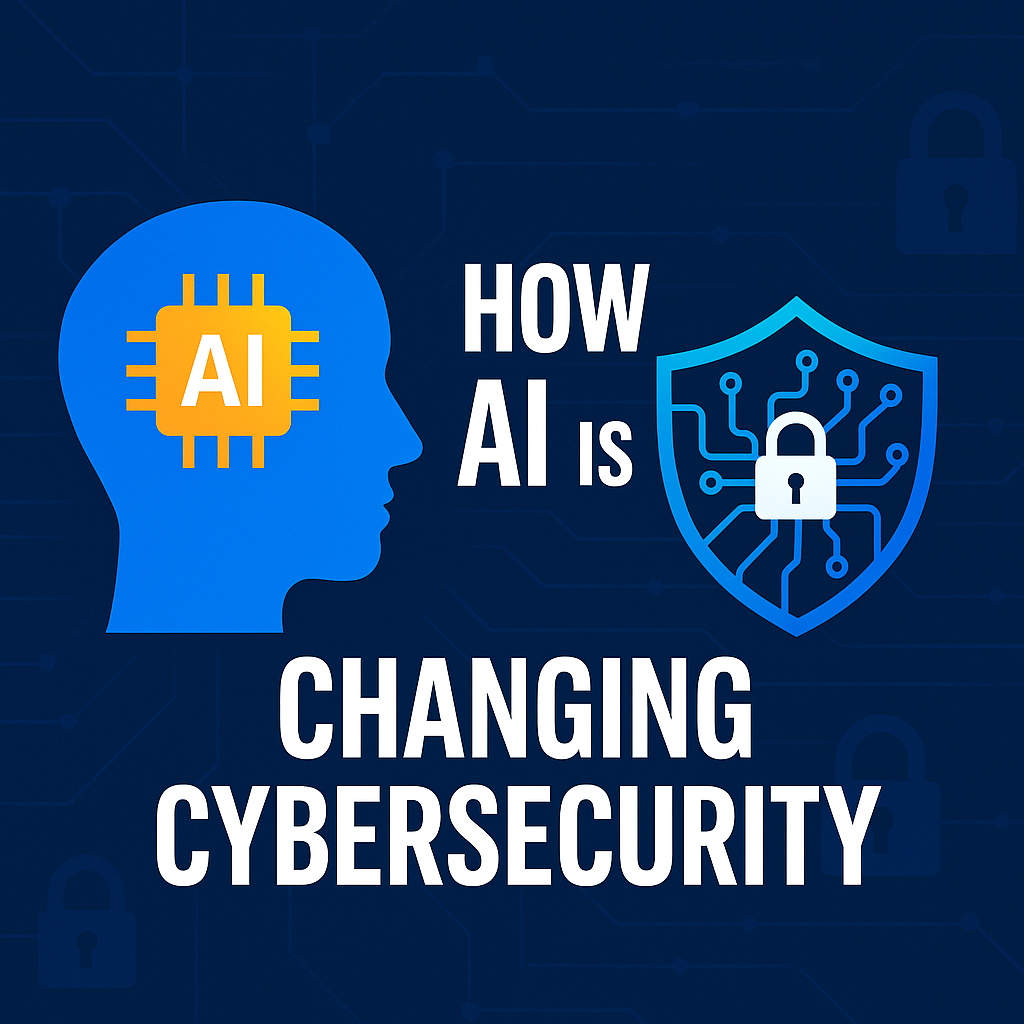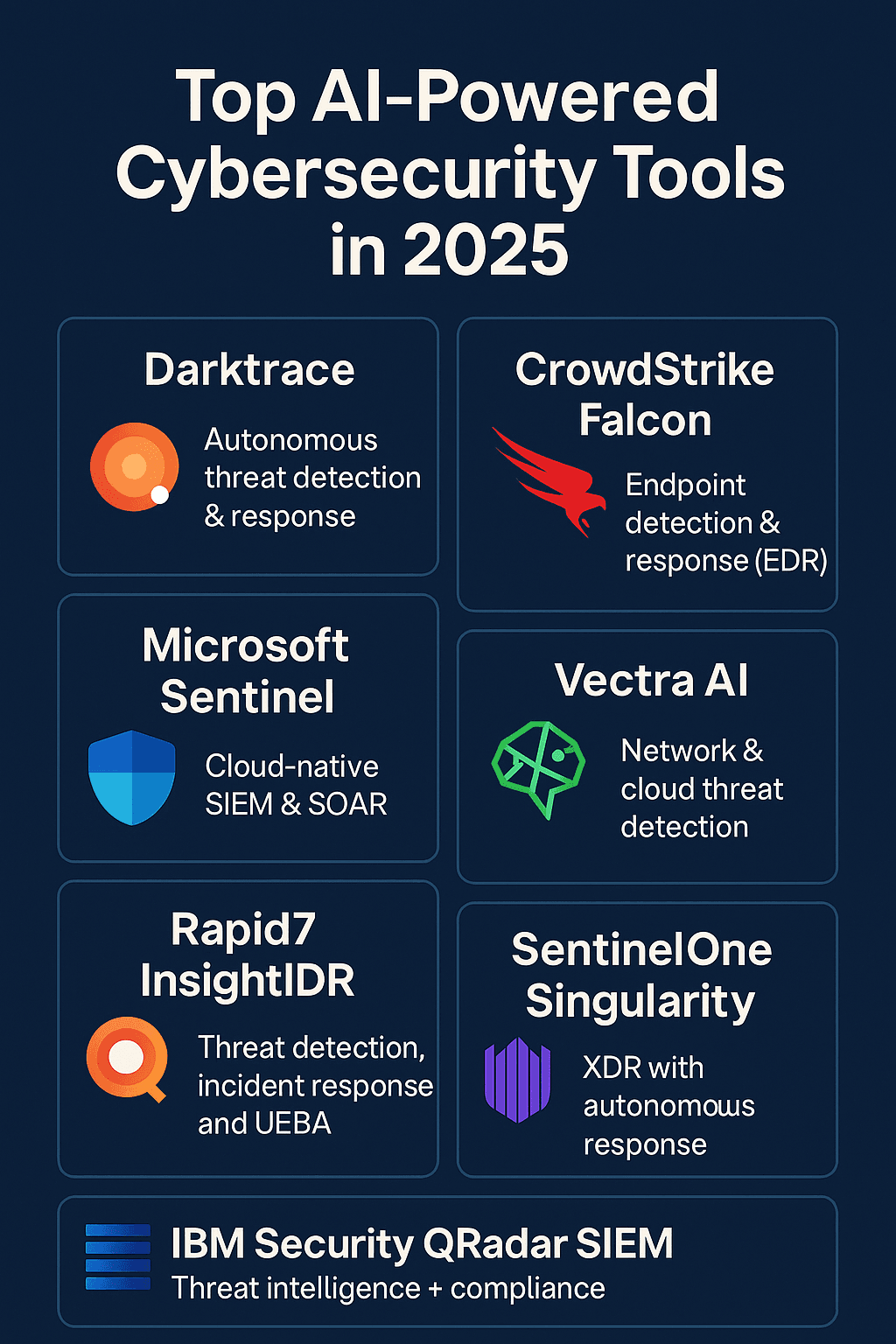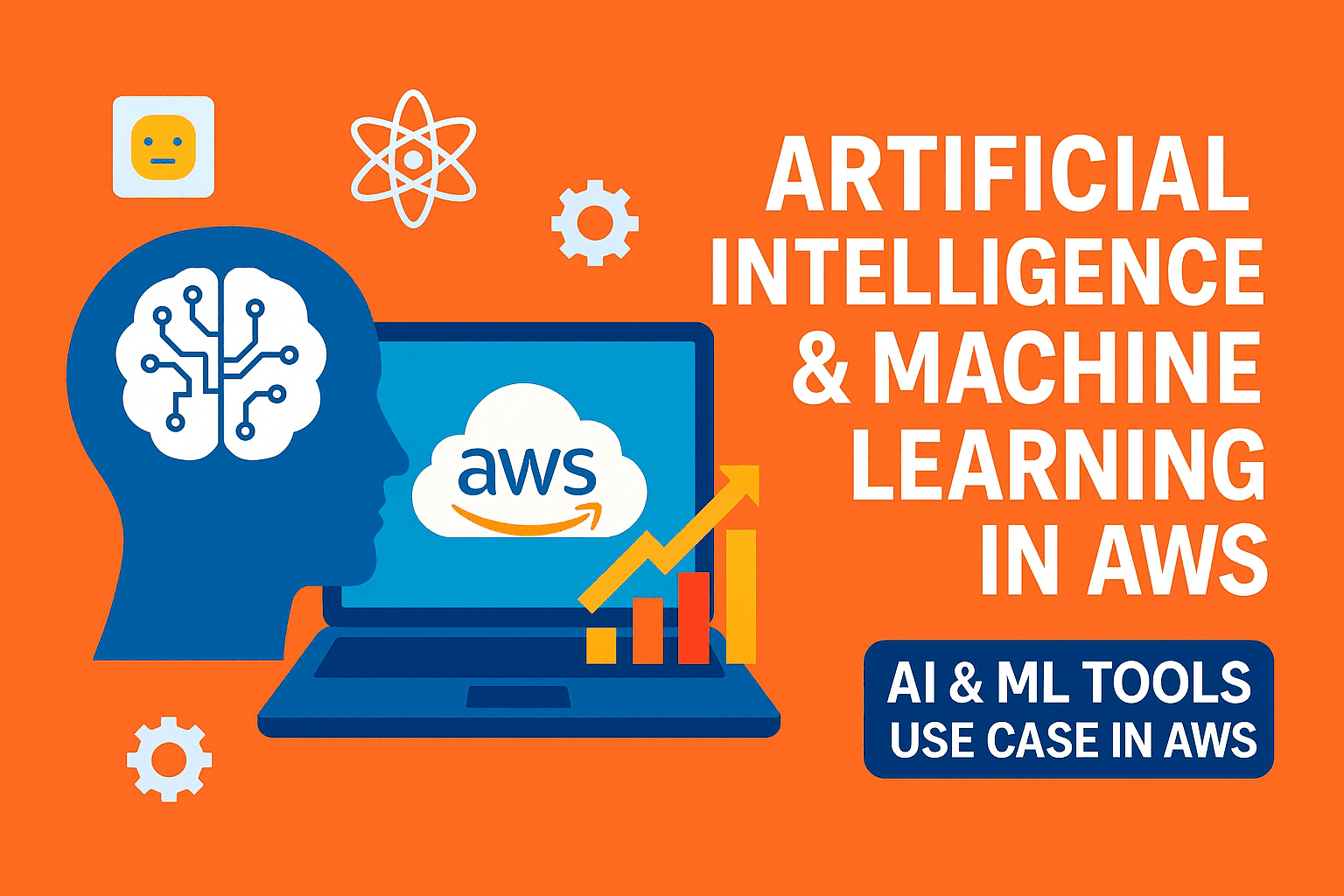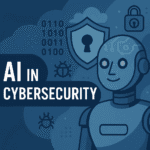
Artificial Intelligence (AI) is rapidly transforming industries across the globe, and cybersecurity is no exception. As cyber threats become more sophisticated, so do the tools used to defend against them. But AI doesn’t just offer new ways to protect the environment, it also opens doors for cyberattacks to launch smarter and more elusive attacks.
In this article let’s explore, how AI is changing cybersecurity with real-world examples, and discuss what organizations and individuals need to know to stay protected in an AI-powered future.
Table of Contents
ToggleWhy AI Matters in Cybersecurity
The sheer volume and complexity of cyber threats today make manual detection and response almost impossible. Modern enterprises face thousands of alerts daily, from phishing attempts to malware outbreaks. AI and machine learning step in to analyze massive datasets, recognize patterns, and automate responses at machine speed.
- Scale: AI can process and analyze far more data compare to any human .
- Speed: Threats are detected and responded to in real-time, minimizing damages.
- Adaptability: AI learns and evolves, adapting to new attack vectors and tactics.
“AI is not just a tool for defense—it’s a necessity where cybercriminals are equally equipped with intelligent technologies.”
AI-Powered Cyber Attacks: A New Threat Landscape
AI is helping attackers to move faster and hit harder, while AI strengthens defenses, it’s also arming hackers with unprecedented capabilities. Cybercriminals are using AI to automate, personalize, and scale attacks in ways never seen before.
Examples of AI-Driven Attacks
- AI-Powered Phishing & Social Engineering: The days of obvious spam have passed. Today attackers use AI to create realistic and very convincing phishing emails by using publicly available data and natural language models. It can even generate fake websites or social media profiles that look real. They analyze social media profiles and communication patterns. This increases the chance that victims will click on malicious links.
- Deepfake Scams: AI-generated video and audio can impersonate executives or colleagues, tricking employees into transferring funds or divulging sensitive data. There are real-world examples, such as deepfake videos that request fund transfers or voice clones used to get around security systems.
- Automated Malware: Some malware uses AI to get past traditional signature-based detection. It changes its code and behavior to avoid being caught.
- Adversarial Machine Learning: Attackers can feed misleading data to AI systems, For example, an attacker might change an image slightly so it cannot be detected by the software.
- Password Cracking: Machine learning models can predict and crack passwords faster by learning from previously leaked credentials and user habits.
These AI-driven tactics mean that attacks are not only more frequent, but also more targeted and difficult to identify.
Did you know? Automated cyber scans powered by AI now hit over 36,000 scans per second.
AI-Driven Defenses: Building Smarter Security
On the other side, cybersecurity professionals are leveraging AI to create smart, proactive and intelligent defenses.. Thankfully, AI isn’t just helping the cybercriminals. It’s also a strong tool for defense.
How AI is being used to protect digital assets:
- AI-Powered Threat Detection: Modern tools like Microsoft Sentinel, Darktrace, and CrowdStrike use AI to monitor traffic, spot unusual activity, and find attacks before they can spread.
- Anomaly Detection: AI systems learn “normal” network behavior and instantly flag unusual activity, helping to catch threats like insider attacks or zero-day exploits.
- Automated Incident Response: AI-powered tools can isolate affected machines, block malicious traffic, or initiate other responses without human intervention, drastically reducing response times.
- Threat Intelligence: Machine learning scans millions of sources across the web and dark web to identify emerging threats, vulnerabilities, and indicators of compromise.
- User Behavior Analytics: AI monitors employee actions for suspicious changes, such as unusual logins or data downloads, alerting security teams in real time.
- Predictive Security: By analyzing past incidents, AI predicts potential future attacks and helps organizations shore up weak spots before they’re exploited.
These technologies empower security teams to move from a reactive to a proactive stance, making it far harder for attackers to succeed.
Top 7 latest AI-Powered Cybersecurity Tools, it’s Features and Use case

1. Darktrace – Focus on Autonomous threat detection & response.
Key Features: Self-learning AI that adapts to your network, Detects novel threats and insider activity, Responds in real time using Antigena AI
Use Case: Protecting hybrid cloud environments and stopping zero-day exploits
2. CrowdStrike Falcon- Focus on Endpoint detection & response (EDR.)
Key Features: AI-enhanced behavioral analytics, Threat hunting with CrowdStrike Threat Graph, Lightweight agent for multi-OS coverage
Use Case: Enterprise endpoint protection with rapid incident response
3. Microsoft Sentinel– Focus on Cloud-native SIEM & SOAR.
Key Features: AI-driven threat detection and correlation, Automated playbooks with Logic Apps, Native integration with Microsoft 365 Defender
Use Case: Centralized security visibility across hybrid infrastructure
4. Vectra AI- Focus on Network & cloud threat detection
Key Features: Uses AI to detect lateral movement and command-and-control (C2) traffic, AI-driven prioritization of threats, Real-time visibility into Azure AD and SaaS apps
Use Case: Detecting advanced attacks in Microsoft cloud and SaaS environments
5. Rapid7 InsightIDR- Focus on Threat detection, incident response, and UEBA
Key Features: AI and User & Entity Behavior Analytics (UEBA), Threat intelligence and attacker behavior analytics, Integration with Rapid7’s Insight platform
Use Case: Faster detection and remediation with automated workflows
6. SentinelOne Singularity- Focus on XDR with autonomous response
Key Features: AI-powered static and behavioral detection, Storyline™ technology for full attack context, 1-click rollback for ransomware recovery
Use Case: Autonomous protection with minimal human intervention
7. IBM Security QRadar SIEM- Focus on Threat intelligence and compliance
Key Features: AI-assisted log analysis and correlation, MITRE ATT&CK framework integration, Advanced AI analytics for anomaly detection
Use Case: Enterprises requiring compliance and large-scale log analytics
Case Study: How JPMorgan Uses AI to Stop Fraud in Real Time
JPMorgan Chase uses machine learning models to monitor over 250 million transactions every day. Their fraud detection system analyzes behavior in real time, detects anomalies, and uses AI-driven scoring to flag suspicious activity immediately. This has greatly reduced false positives and improved the efficiency of investigations.
Case Study: Airbus and AI-Enhanced Network Monitoring
Airbus employs Darktrace’s Enterprise Immune System to monitor internal networks, identify unusual activity, and respond right away. The system helped Airbus detect an insider threat early, highlighting AI’s role in proactive threat defense.
Framework Focus: MITRE ATT&CK + AI = Smarter Defense
Security teams now combine AI tools with MITRE ATT&CK to classify attack stages, understand enemy tactics, and respond effectively. AI learns from this framework to prioritize alerts and identify lateral movement across systems.
Benefits & Challenges of AI in Cybersecurity
Key Benefits
- Efficiency: It automates routine tasks, freeing up security experts to focus on complex threats.
- Accuracy: It reduces false positives and ensures real threats are not overlooked.
- 24/7 Monitoring: AI systems never sleep, providing continuous protection.
- Cost Savings: Reduces the need for large security teams by automating many functions.
Major Challenges
- Adversarial Attacks: Hackers can attempt to “trick” AI models by feeding them misleading data, potentially bypassing defenses.
- Bias and Errors: If AI is trained on biased or incomplete data, it may overlook certain threats or discriminate against legitimate users.
- Resource Requirements: AI solutions require significant computing power and ongoing tuning to stay effective.
- Weaponization: As both attackers and defenders use AI, it becomes a never-ending arms race.
How to Protect the environment from AI-Driven Threats
- Use AI-enhanced security tools: Look for behavior analytics, anomaly detection, and real-time response features.
- Train your team: Educate the team member and employees to spot deepfakes and AI-generated phishing attempts.
- Adopt Zero Trust architecture: Verify identities, limit access, and segment networks.
- Monitor and secure AI models: Use firewalls for AI, audit training data, and prepare for adversarial attacks.
Industry Insight: Some experts thought about AI in Cybersecurity
“AI allows security teams to do in minutes what used to take hours.”
— George Kurtz, CEO of CrowdStrike“The key is not to replace humans with AI, but to augment them.”
— Nicole Eagan, Chief Strategy Officer, Darktrace
Future Trends: Where is AI in Cybersecurity Headed?
The connection between AI and cybersecurity is just beginning. What the future may look like:
- Autonomous Security: Security systems that can detect, investigate, and neutralize threats with minimal human input.
- Explainable AI: As AI decisions become more critical, there’s a push for transparency. This makes it easier for humans to understand and trust AI-driven alerts.
- AI Collaboration: Human-AI teams will become common, combining machine speed with human intuition.
- AI-Driven Regulations: Governments and organizations will introduce new laws and standards to guide the ethical use of AI in security.
- Rise of AI-Enabled Insider Threats: As AI tools become more accessible, even insiders may use them to bypass controls.
Conclusion: Adapting to an AI-Driven Security Era
The impact of AI on cybersecurity is significant and complex. While AI helps create stronger, faster, and more flexible defenses, it also drives smarter and more relentless attacks. The main focus for organizations and individuals should be to adopt AI-based security solutions, invest in continuous AI training and monitoring, and promote a culture of cyber awareness.
As we enter the AI era, being alert and adaptable will be our greatest strengths. The digital landscape is changing, and those who succeed will be the ones who know how to use AI for protection while also recognizing how it can be turned against them.
Want more articles on AI and cybersecurity? Explore: vlookuphub .


